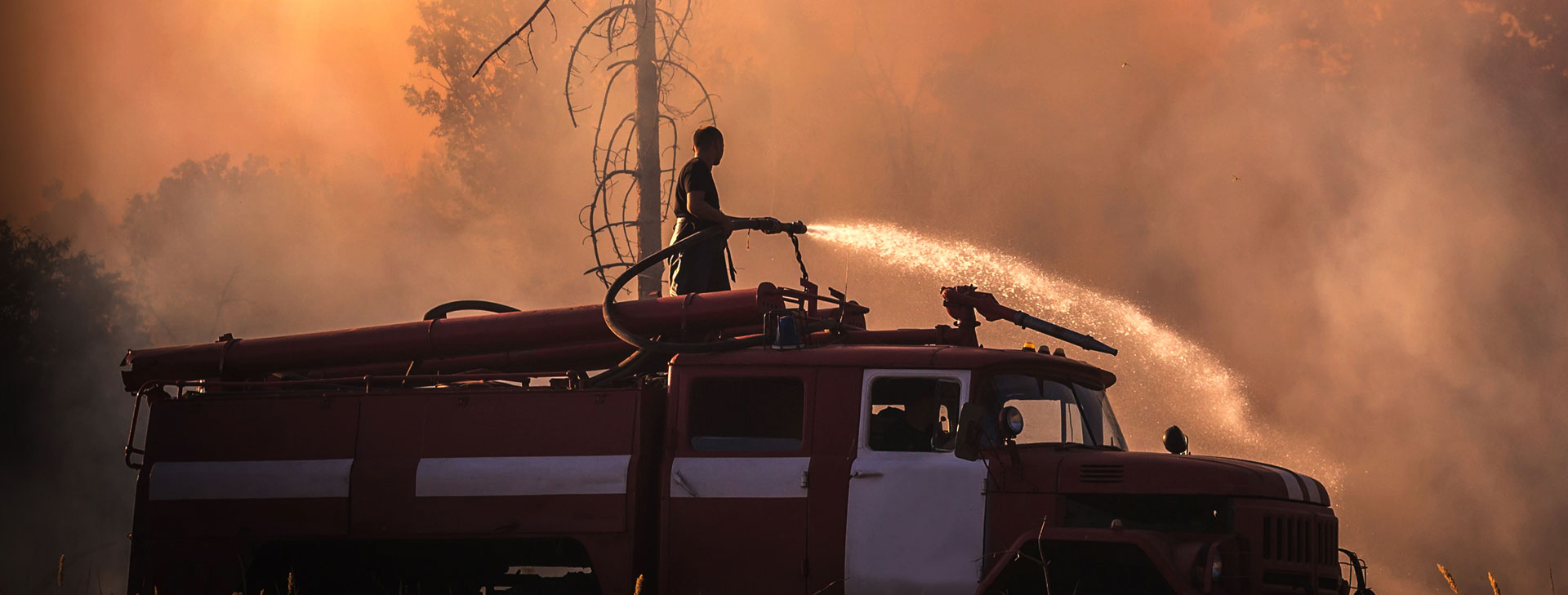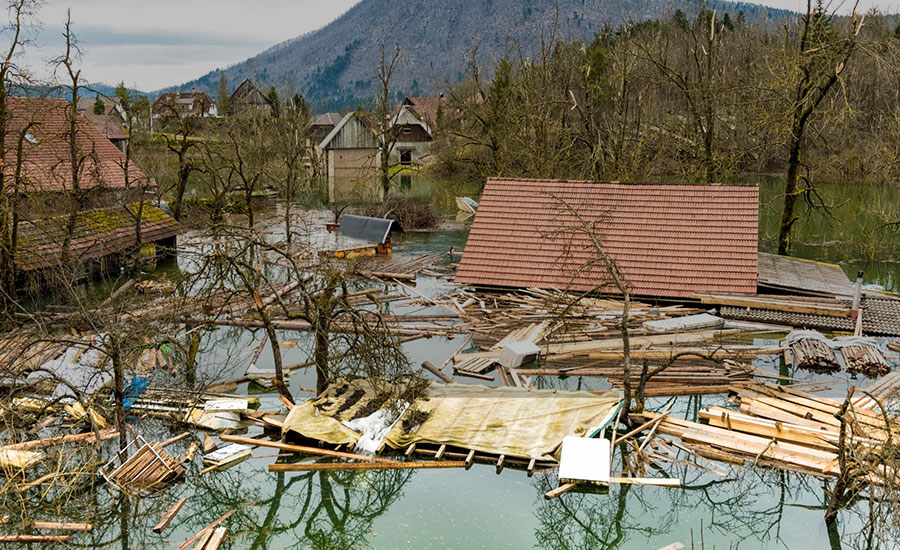Many economies in South-East Asia are at a critical crossroads, where they can avoid locking in new coal infrastructure. But they need to move fast to direct finance toward new forms of electricity and energy production.
- Sam Geall, CEO of China Dialogue TrustClimate change presents compelling challenges to Asia, raising concerns among all stakeholders, including the general public. Yet environmental experts and business specialists interviewed for this study believe that the urgency of the climate problem is not translating to action, with governments still slow to respond.

In light of these circumstances, business leaders must play a more substantial role in driving solutions. “It is time that businesses took responsibility for the emissions they are causing and the human rights impacts they are having on populations that are not necessarily where their businesses are located,” noted Ian Fry, Special Rapporteur on human rights and climate change.
Rules and action plans aplenty
Many countries in Asia have their own climate targets and strategies.
Table 1: A snapshot of climate pledges in Asia
The following list is not inclusive. In some countries a wide range of plans have been issued at national and provincial levels.
- Bangladesh
- China
- India
- Indonesia
- Malaysia
- Mongolia
- Sri Lanka
- Thailand
- Vietnam
Climate target
Conditional reduction of emissions by 2030.39 In its Nationally Determined Contributions submitted in 2021, Bangladesh committed 6.7% emissions reduction to business-as-usual (BAU) scenarios by 2030 and 15.12% conditional to receiving international support
Climate strategy
Bangladesh’s Climate Fiscal Framework (CFF); National Adaptation Plan of Bangladesh (2023-2050); Nationally Determined Contributions 2021; Bangladesh Climate Change Strategy and Action Plan 2008; Bangladesh National Action Plan on Short-Lived Climate Pollutants (SLCPs) to identify and implement actions from 2010 to 2040.
Climate target
Peak carbon emissions before 2030 and net zero before 206040
Climate strategy
Long-term Low Greenhouse Gas Emission Development Strategy (2021),41 14th Five-Year Plan on Renewable Energy Development.42
Climate target
Net zero by 2070
Climate strategy
National Action Plan for Climate Change launched in 2008; the Lifestyle for Environment (LiFE) initiative launched in 2021; National Green Hydrogen Mission approved in 2022.
Climate target
Net zero by 2060
Climate strategy
National Action Plan for Reducing Greenhouse Gas Emissions (RAN-GRK), 2011. Indonesia is working on introducing a National Grand Energy Strategy that will integrate the targets set out in its Nationally Determined Contribution (NDC).
Climate target
Carbon neutral as early as 2050
Climate strategy
The National Energy Policy 2022-2040 lays out action plans for a low carbon nation. Malaysia has yet to develop a national adaptation policy or roadmap for NDC.
Climate target
No net zero target by 2050, pledged to reduce emissions by 22.7% by 2030
Climate strategy
Nationally Determined Contributions (NDC) 2022. National Action Plan for Climate Change 2011-2021. National Green Development Policy 2014- 2030. Sustainable Development Vision 2030.
Climate target
Carbon neutral by 2050
Climate strategy
Climate Prosperity Plan 2022
Climate target
Net zero by 2065. Under its National Determined Contributions 2022, Thailand aims to reduce GHG emissions by 20-25% below the BAU level by 2030
Climate strategy
Climate Change Master Plan 2015-2050; Nationally Determined Contributions 2022.
Climate target
Net zero by 2050
Climate strategy
Vietnam's National Adaptation Plan was approved by the Prime Minister in 2020 and is currently being reviewed to advance the process of transformative adaptation programmes in key priority areas.
A growing body of securities regulations and listing requirements by privately-owned stock exchanges is also forcing greater corporate openness on environmental performance, including activities that relate to climate change. India’s Securities Exchange Board, for example, has created a Business Sustainability and Responsibility Framework43 for the top 1,000 listed companies. It compels transparency on, among other things, environmental and social impacts of business operations, due diligence and responsible consumption. Similarly, the Corporate Governance Code of Thailand’s Securities Exchange Commission requires company boards to conduct sustainability reporting. Meanwhile, the private Singapore Exchange (SGX) now demands climate-related reporting from businesses in industries with the biggest impacts, including financial services, agriculture, forestry and energy.44 The table below lists similar regulations and guidelines across the region.
Table 2: Key frameworks in Asia
- China
- Hong Kong
- India
- Japan
- Singapore
- Thailand
Corporate social responsibility (CSR) guidelines (Shenzhen SE 2006, Shanghai SE 2008); state-owned enterprises to publish annual CSR report (2012); guidelines for Establishing a Green Financial System (2016); environmental disclosure for key emission enterprises (2017); code of corporate governance for listed companies (2018).
Code of Corporate Government Practices (2005); implementation of ESG guide (2012); new Code of Corporate Governance (2013); Listed companies to follow general disclosure provision (2016); listed companies to report environmental key performance indicators (KPIs) (2017).
Voluntary CSR guidelines (2009); National Voluntary Guidelines on Social, Environmental and Economic Responsibilities of Businesses (2011); Securities and Exchange Board of India Circular on Business Responsibility Report (2012); The Companies Act of 2013, Companies CSR rules (2014); Listing obligations and disclosure requirements (2015), Business Responsibility and Sustainability Report (2022).
Environmental Reporting Guidelines (2003); The Tokyo Stock Exchange (TSE) Principles of Corporate Governance for Listed Companies (2004); Corporate Governance Code (2015); Enhancing Corporate Governance Code (2018).
Code of Corporate Governance (2001); SGX Sustainability Reporting Guide (2016); Listed companies to provide sustainability report (2018).
Guidelines for Sustainability Reporting (2010); Principles of Good Corporate Governance (2012), Corporate Governance Code (2017).
Certain states in Asia have invested in green energy, although coal power still dwarfs it. A decade or more ago, China’s solar industry began to expand rapidly. China went from 44 GW of capacity to 300 GW in six years.45 India is also investing heavily in clean tech and its solar generation capacity has increased 50-fold since 2012, to nearly 50 GW at the end of 2021.46
Invested in green energy
A decade ago, China had no solar industry, yet in the past six years this has grown from 44 GW of capacity to 300 GW. India’s solar generation capacity has increased 50-fold since 2012 to nearly 50 GW at the end of 2021.
Many believe that the region can make great strides in the transition to clean, green energy, although doing so will require conscious policy choices. Sam Geall, CEO of China Dialogue Trust, noted that “many economies in South-East Asia are at a critical crossroads, where they can avoid locking in new coal infrastructure. But they need to move fast to direct finance toward new forms of electricity and energy production.”
Shortcomings in governance
Despite a growing number of policies and clean power projects, Asian regulators and companies still lag behind other regions in environmental metrics. According to some experts interviewed for this report, policy objectives can be complicated by cronyism, corruption and poor accountability. Weaknesses in human rights protections may also undercut the ability of civil society to call attention to gaps and abuses by business actors.
Figure 9: The factors hampering climate change efforts are manifold
Governance effectiveness risk (scores range from 0-4, higher numbers indicate more risk)
Source: Risk Tracker, The Economist Intelligence Unit, October 2022
In certain states, these governance deficiencies have allowed a culture of leniency towards businesses that are contravening formal human rights and environmental agreements. In some countries in Asia, Environmental Impact Assessments (EIAs) lack credibility as firms which conduct EIAs are easily influenced by powerful clients seeking to clear projects.
The government actively discourages discussions on the links between human rights and climate change. Big corporations do not have the motivation to challenge the status quo.
- A human rights advocate in Vietnam
Remedying these conditions is still difficult because of the lack of civic space for dialogue. One climate and human rights expert that asked not to be named, says that his government “actively discourages” discussions on the links between human rights and climate change. This reflects a gap between the country’s international acknowledgement of the concepts and how they translate domestically. “We do not have pressure from the ground up. It is a top-down structure in every way, shape and form,” according to the respondent, adding “big corporations do not have the motivation to challenge the status quo.” The lack of support for discussions around human rights and climate change is found in many contexts in Asia but with especially worrying implications for civil society organisations (see box).
Still, other observers counter that gaps in climate financing and a lack of global governance mechanisms provide a stronger explanation for any shortcomings in progress. Developing countries in Asia and elsewhere face significant obstacles in attracting climate investments and higher costs of finance compared to developed economies. At the same time, advanced economies are not taking full responsibility for their historical contributions of higher per capita GHG emissions. If viewed through the lens of history and equity, the metrics may in fact demonstrate far greater shortcomings in responses to the climate crisis from advanced economies, than developing countries in Asia.
The dangers of advocacy
In many countries, poor human rights protections create an environment that “freezes” open political discussion, including around climate change and the factors driving it. In such conditions, generating public support for climate sensitive policies or remedies for climate related human rights abuses, for example, becomes nearly impossible. Marginalised communities in particular are often excluded from conversations and decision-making processes related to climate change, so the policies that do arise are unlikely to address their needs adequately.
In some Asian countries, the issue goes well beyond censorship and exclusion from policy making processes. Those opposed to land and environmental abuses by businesses, and their state patrons, face significant levels of violence. In 2021, the Business & Human Rights Resource Centre recorded approximately 400 attacks against climate, land and environmental rights activists. The Asia-Pacific and Latin American regions have consistently recorded the highest number of attacks since 2015.47 South-East Asia has seen a notable increase in attacks against defenders. In 2021, three out of the four most dangerous Asia-Pacific countries for human rights defenders were found in that region.48
Climate defenders under attack
In 2021, the Business & Human Rights Resource Centre recorded approximately 400 attacks against climate, land and environmental rights activists.

Countries in Asia-Pacific also rank poorly on workers’ rights (see Table 3). The right to organise is largely stifled and discouraged, which is compounded by the curtailment of free speech rights across the region. Weak worker protections hamper climate action in two important ways: first they prevent advocacy for stronger environmental policies, such as clean air in the workplace; second, they can impede progress on climate action by exacerbating social and economic inequalities, as low-income communities, Indigenous Peoples and ethnic minorities are often disproportionately affected by climate change.
Table 3: Workers’ rights violations, Asia-Pacific
Right to register trade union activities
% registration of unions impeded
Right to strike
% prosecution of union leaders for participating in strikes, dismissals for participating in strike action
Right to establish and join a trade union
% workers excluded from labour protections, union busting, excluded workers from the right to establish and join a trade union
Right to collective bargaining
% violated the right to collective bargaining
Right to civil liberties
% countries arrested and detained workers
Right to justice
% countries deny workers access to justice
Right to free speech and assembly
% countries restricting free speech and assembly
Freedom from violent attacks on workers
% workers experienced violence
Source: Global Rights Index, 2022, ITUC CSI IGB49
Practical challenges facing governments
Another fundamental barrier to more effective government efforts against climate change is shifting political will and competing policy priorities. Some leaders across the region have resisted calls to overhaul their energy and industry sectors to protect vested interests, but others have insisted that a transition to clean energy cannot come at the expense of poverty eradication, access to energy, and other development imperatives. These arguments have been made most compellingly by countries with lower per capita incomes and historically lower energy consumption and emissions rates than industrialised nations. They note that advanced economies have cumulatively produced and benefited from emissions that created climate change and therefore bear a disproportionate burden to rectify the problem. Indeed, the idea of “common but differentiated responsibilities” between advanced and developing countries, has been a principle at the heart of climate negotiations since the first Conference of the Parties (COP1) in Berlin in 1995. Developing countries also point to “climate hypocrisy”, where the developed, industrialised “West” continues to benefit from cheap Asian goods despite the use of coal in their production.
Furthermore, climate finance and access to new technologies, critical factors in reducing GHG emissions, remains out of reach for many governments in Asia despite pledges by advanced economies to do more. Until this circumstance changes, progress on climate mitigation efforts by governments in Asia can only be expected to go so far.
Figure 10: Imports from developing Asian countries, as a share of total imports (%)
Source: International Monetary Fund DOTS50
Thus, efforts to “decarbonise” power production over the next decade will need to occur in the context of providing energy security amid the world’s greatest forecast growth in electricity consumption.51 One driver of this growth is the collective aspirations of over a billion people to achieve a better standard of living. Currently, about 1.5bn people in Asia do not have access to electricity52 and nearly as many also rely on unclean fuel for cooking - such as wood - a practice that harms both the broader environment and shortens the life expectancy of the families who rely on it.53
1.5 billion
Currently, about 1.5 billion people in Asia do not have access to electricity and nearly as many also rely on unclean fuel for cooking - such as wood - a practice that harms both the broader environment and shortens the life expectancy of the families who rely on it.
Changing the region’s reliance on fossil fuels will therefore be expensive, with costs going well beyond those of new facilities to produce renewables. An Economist Impact survey of businesses found that integrating intermittent renewable energy into traditional, incompatible grid structures is a major bottleneck in the transition to clean energy.54 Vietnam, for example, has had some success in increasing renewable energy generation, but its National Load Dispatch Centre reported in 2021 that it had insufficient input facilities to transfer this green energy to the grid.
Integrating intermittent renewable energy into traditional, incompatible grid structures is a major bottleneck in the transition to clean energy.
- Accelerating the energy transition, Economist Impact 2022
Governments genuinely interested in addressing climate change and enacting good regulation also frequently face a shortage of resources, capacity and technical expertise to guide businesses and monitor their activities. “There’s the issue of laws not being stringent enough to deter companies from not complying,” says Mr Bueta. “There’s also the challenge of enforcement that requires technical and resource capacity of the government to actually carry out the inspections, review the data and make sense of all the company reports [either] to understand whether they are properly complying [or] to be able to shape new policies,” he adds. Joseph D’Cruz, CEO at the Roundtable on Sustainable Palm Oil (RSPO), nevertheless identifies government action as a key driver of change: “Government sets the minimum standards with which all companies need to comply. If governments progressively introduce stronger regulations and stronger enforcement on these issues, businesses will adapt as they do to any government regulation that comes in.”
Practical challenges facing small business

Large transnational companies are familiar with environmental, social and governance (ESG) performance requirements including those related to carbon emissions and climate change. Even big businesses, however, find the task challenging, with the quality of disclosures often lower than desirable.55 In much of Asia, gathering and analysing data for this reporting remains difficult, particularly for small and medium-sized enterprises.
“When you take the full stack of principles and criteria, the requirements in terms of process, the cost involved in going through certification and annual audits, this is quite a high bar for many small companies,” says Mr D’Cruz. “It is a lot harder for [the ones] in less-developed countries with less-developed infrastructure to meet these standards, even if they want to.”
259/186m SMEs
259 Asian SMEs are participating in the Science-based Targets Initiative (SBTi), a voluntary framework that provides a clear path to reduce emissions in line with the Paris agreement. However, there is a long way to go. The region has 186m SMEs.
But it is also not impossible: 259 Asian SMEs are participating in the Science-based Targets Initiative (SBTi), a voluntary framework that provides a clear path to reduce emissions in line with the Paris agreement. Still, there is a long way to go. The region is home to 186m SMEs, all of which may find it harder to access the financing necessary for climate monitoring investments.56 Bringing SMEs into efforts to mitigate climate change remains a huge task.57
Figure 11: Micro, small and medium enterprises’ (MSMEs) contribution to GDP (%) in Asia, latest available year58
Source: 2021 ADB Asia Small and Medium-Sized Enterprise Monitor Volume 1 Country and Regional Reviews.59
Notes: End-of-year data except * fiscal year data (ended 30 June in Bangladesh and 31 March in India). For Malaysia, real GDP data. For Singapore, nominal value added of SMEs. For Bangladesh, contribution of cottage and small enterprises to manufacturing gross value added. For Nepal, data cited from the 2019 NRB Report. For Pakistan, small manufacturing contribution to GDP.
Download the report
Access the footnote sources, appendix information and charts by downloading the full PDF report
Written by










